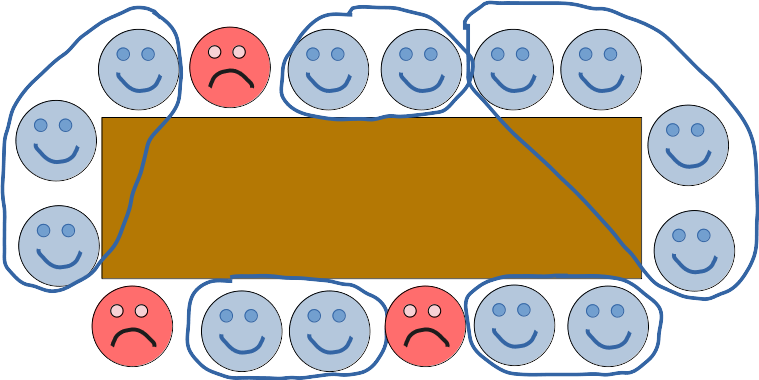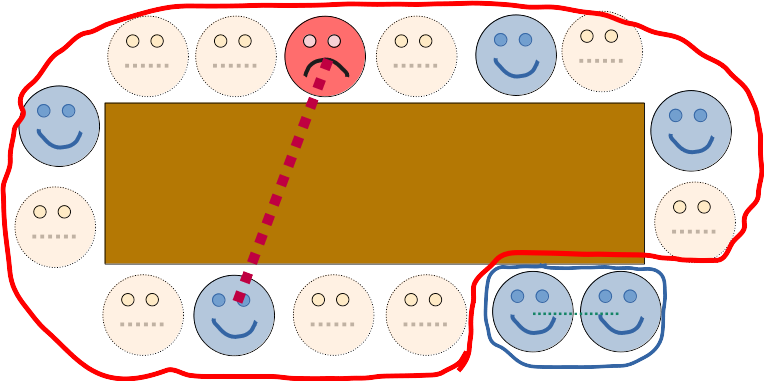Yesterday I attended an “after work” with a bunch of effective altruists that mostly don’t work. But I guess that’s what “pub hangouts” are called nowadays. When we arrived at the bar, we were notified that a Long Table had been reserved for the group.
I don’t like long tables. They create awkward and unpleasant situations. I’ve told people about the troubles of long tables for quite some time, but I’ve never written it down. Until now!
The fundamental problem with long tables lies in the fact that non-facilitated conversations only work with 2-7 active participants, depending on the ambient noise level. Next time you are invited to a social gathering, I urge you to arrive early and start a group conversation. As the guests trickle in, observe at what point the group splits in two. It will most likely be around the 5-7 people mark.
The group can split in 2 different ways. The first way is by splitting into two smaller groups with active participants in both. The other, subtler way is when the group turns into 2-7 active participants and x number of passive observers.
When seated around a long table, the 2 different ways of splitting leads to really weird situations, which I will explain in detail. You have most likely experienced them unless you are from a more enlightened cultural context.
Horrors of long tables
Between the cracks
Sometimes, around long tables, you end up sitting between groups. You can’t just barge in on the surrounding groups, since that would create a three-in-a-row.
Three-in-a-rows doesn’t work, since the “edge” participants’ interaction is blocked by the “center” participant.
Noisy neighbours
It is possible to temporarily split up into groups where no one falls between the cracks. Problem solved? I think not.
In this situation, there are multiple groups sitting right next to each other. Some groups are small, with people sitting close to each other. Some groups are bigger, and more spread out. The longer the distance between group participants, the louder the participants have to talk in order to hear each other. This imposes on the groups sitting nearby.
When the noise becomes too much, the conversation in the impinged-on group ends, turning them into passive observers of the bigger group.
The passive observers will wait for some time, and then join in on the conversation. This creates an unwieldy three-in-a-row in the bottom right, which drops the bottom-left participant between the cracks.
The observer pattern
The “observer pattern” requires some people (well.. males) around the long table that are high status, drunk, and/or socially awkward. These people create a sprawling network of active participants, surrounded by passive observers.
The active participants aren’t aware that they are hogging the conversational space. They think of this set-up as inclusive, as no one is visibly/explicitly excluded.
The active participants might even try to bring someone “into the conversation” in front of an audience of passive observers.
Final note
These are the core weird dynamics that pops up when engaging in long table socializing. Also check out part 2, where I present the glorious round tables, as well as an analysis on what needs to be in place before we can adopt round tables en masse.










